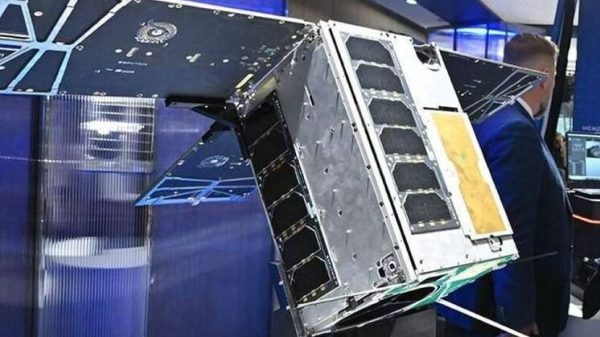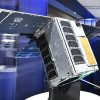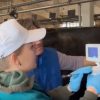NASA is going to create a network for video communication with astronauts on Mars
NASA reports that the Earth received a message transmitted by a laser from a distance of 100 million miles. The laser transmitted test data over a distance more than four times the distance to the Moon. This could one day create a network that allows video calls with astronauts on Mars.

A laser emitted from more than 100 million miles away has just reached Earth, the Daily Mail writes. But unlike the movie Independence Day, this laser is completely harmless — and NASA says the aliens are not to blame.
The laser was aimed at Earth by NASA's Psyche spacecraft, which is currently more than 100 million miles (160 million kilometers) from Earth. To put that into perspective, that's four times further away than the Moon, explains the Daily Mail.
NASA hopes new technology will one day allow astronauts on future missions to make video calls to Earth from as far away as Mars.< /p>
This was the first test, or «first beam», of the laser deep space optical communications (DSOC) system. This is also the first time a laser has been used to transmit data further than the Moon.
NASA says it wants to use the technology tested here to create a communications network in space just like the network of fiber optic cables used on Earth.
DSOC flies alongside the Psyche spacecraft as it completes its long journey 2.2 billion miles (3.6 billion kilometers) to asteroid 16 Psyche between Mars and Jupiter.
Along the way, Psyche will complete a «Mars flyby,» giving NASA engineers a chance to see if future Mars missions can missions to use lasers to maintain communications with Earth.
Trudy Cortez, director of technology demonstrations at NASA Headquarters, said: «Achieving first light is one of many important milestones for DSOC in the coming months.»
Cortez added that the test paves the way for «communications with more high data rates, capable of transmitting scientific information, high-definition images and streaming video to support humanity's next giant leap.»
Modern satellites use radio signals to communicate, receive commands and return data to controllers.
Radio waves and lasers are both types of electromagnetic radiation that can travel through the vacuum of space at the speed of light, writes the Daily Mail. The difference is that because infrared light is a higher frequency wave, NASA's new laser communications system can transmit more information per second.
The laser transceiver takes data in the form of bits and encodes it into photons, which make up the laser. Once back on Earth, the signal is received by a superconducting, high-efficiency detector array that identifies individual photons as they arrive and decodes the data.
Although the signal does travel at the speed of light, the long distances pose a serious problem in accurately transmitting laser light. signal to a receiver on Earth.
DSOC first detects a high-power uplink laser beacon transmitted by the Communications Optical Telescope Laboratory at JPL's Mesa facility in California. This allows the spacecraft to point its laser at the communications system at Palomar, located about 100 miles (130 km) to the south.
Meera Srinivasan, DSOC operations manager at NASA's Jet Propulsion Laboratory, said the test was » the first to utilize ground assets and an airborne transceiver entirely, requiring the DSOC and Psyche task forces to work in tandem.»
«This has been a challenging task and we have a lot more work to do, but in a short time we were able to transmit, receive and decode some data,» she added.
NASA is also preparing to install a two-way laser communications system on the International Space Station, notes the Daily Mail.
Earlier in this month, NASA sent a laser communications terminal to the ISS to test how high-speed lasers could be used in low orbit. The ultimate goal is to integrate lasers throughout the communications system to create a faster, more reliable network in space.


























































Свежие комментарии